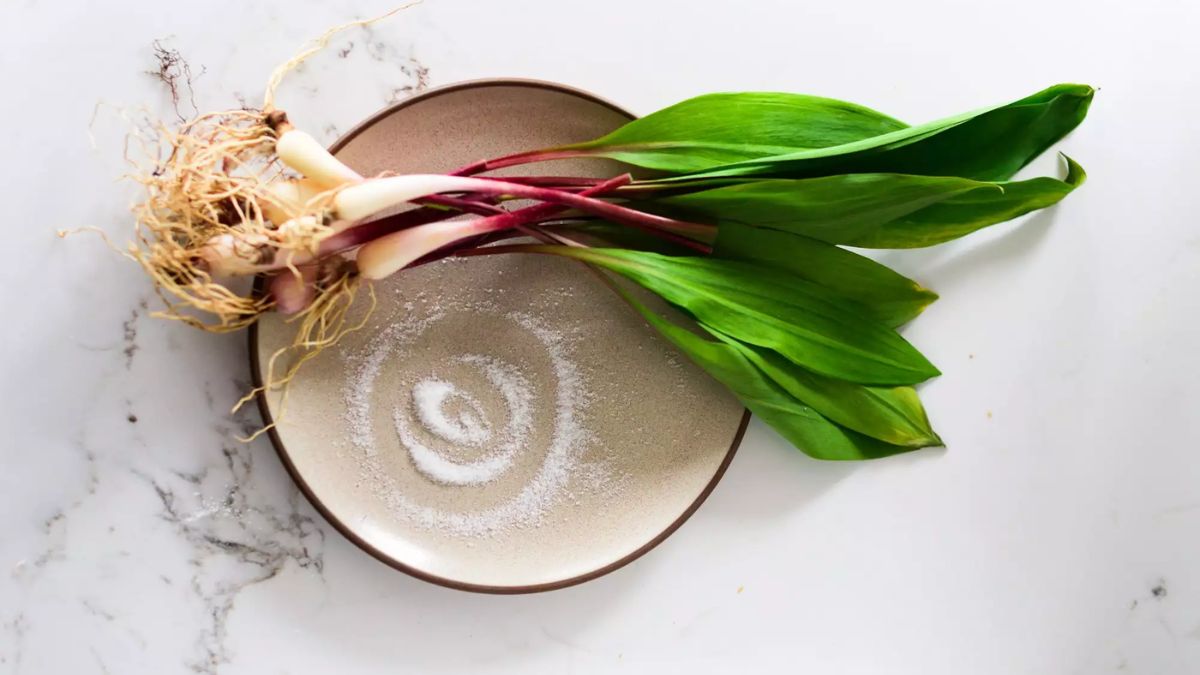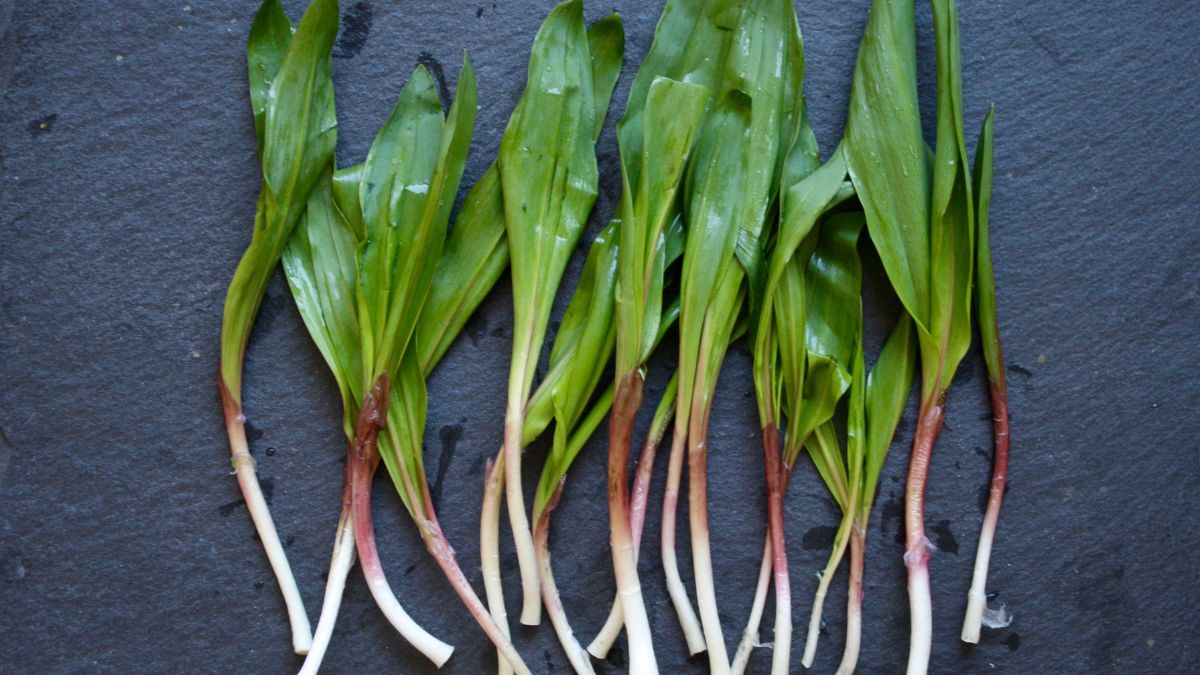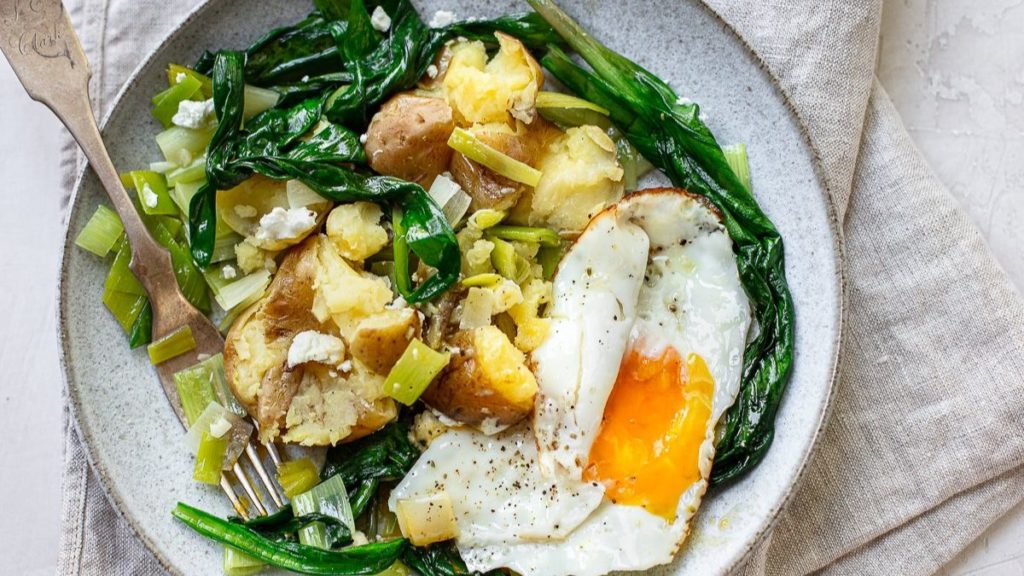Ramps grow in low mountain areas from South Carolina to Canada. They are related to onions, leeks, scallions, and shallots. In many places, they are a spring treat and a reason to have a party. Ramps have been picked for a long time in the Appalachian region of the United States. Tennessee, Virginia, and North Carolina also have ramp festivals. Ramps can be eaten raw, sautéed, roasted, grilled, and even pickled.
Ramps, also called allium tricoccum, are in the same family as onions, garlic, scallions, and leeks, but they won’t make you cry like a big onion. They are a wild plant that grows along the Appalachian Mountain range on the East Coast. They are at their best in the spring. When it gets warm, ramps quickly get worse, so use them while they’re still in good shape. You can find the freshest ramps at local farmers’ markets or Whole Foods. Due to high demand, they can be expensive, but as the season goes on, they get even more expensive, so stock up early.
What are Ramps?
Ramps (Allium tricoccum) are small wild onions with broad green leaves and pink-white bulbs that grow in the mountains and hillsides of eastern North America, from the Appalachians to Canada. People in North Carolina and West Virginia like them a lot. They come out of the thawed ground around the time of the last frost and only live for a few weeks before the warmer weather forces them to go back into bed.
They look like scallions, but their leaves are broader, and their stems are purple. Ramps are one of the first plants to show up in the spring, and they usually appear in the Appalachians around the middle of March and around the Great Lakes around the beginning of April. The author of “The Encyclopedia of American Food & Drink,” John Mariani, says that the word “ramps” comes from the Elizabethan word “rams” or “ramson,” which is the name of the wild garlic plant. People who live in Appalachia, where the plants grow naturally, call them “ramps.” They are called wild leeks in other places.
This traditionally wild-grown vegetable is hard to find because it is in high demand from people who know about food and only grows for three weeks. Because of this, commercial growers now grow ramps to supply specialty grocery stores and produce markets. Ramps are more expensive than scallions and other cultivated onions, but fans say they’re worth the extra money.
How to Cook Ramps?
Ramps have also become more popular because they can be cooked in many different ways. Whether they are grilled with asparagus, sautéed with morels in olive oil, scrambled with eggs, or baked on top of pizzas, they add a fragrant onion flavour that automatically makes any dish better.
Ramps can be roasted, grilled, or sautéed, and they can also be eaten raw in salads or pesto. They can be added to risottos and other rice dishes, sauces, pasta, potatoes, eggs, and crostini, to name a few ways to use them. Use green leaves and white bulbs (the leaves are milder in flavour).
Every part of a ramp can be eaten, from its small white bulb that looks like a spring onion to its large green leaves (trim off the roots at the end of the bulb). You can use raw or cooked ramps instead of scallions or leeks in any recipe that calls for them.
They also give soups, egg, potato, and rice dishes a strong flavour. Ramps are a type of onion. You can slice them thin like garlic or shallots and sauté them to make a spring pasta dish, an omelette for breakfast, or a rich pan sauce.
If you have a lot of ramps that you need to use right away, add them to our universal pesto recipe. You could also make savoury compound butter or pickled ramps, which will keep their flavour long after April showers and May flowers.
How to Use Ramps?
You can use ramps in any recipe that calls for scallions or leeks, either raw or cooked. Cut off hairy roots, peel off the top layer of leaves, and rinse or wipe the bulbs to eliminate any extra dirt. Thinly slice the ramps and use them in salads, scrambled eggs, or fried potatoes. You can also sauté them. The stems, leaves, and bulbs are all edible, so you can also grill or roast them.
Ramps Recipes
Ramps give soups, casseroles, egg, rice, and potato dishes, a unique, pungent taste. They can be used in place of green onions in any recipe.
- Pickled Ramps (Wild Leeks)
- Potato and Wild Leeks (Ramps) Soup
- Fried Potatoes With Ramps and Eggs
What do they Taste Like?
People often say that ramps taste and smell like a mix of onion and garlic, with the garlic note being so strong that even ramp lovers will warn you to be careful. The name “little stinkers” is sometimes used to describe them. The green tops have a milder taste than the bulbs and are often eaten with them.
Ramps taste like a cross between garlic and onions, but not quite either one. Since ramps look like other members of the Allium genus, they are often mistaken for wild leeks (Allium ampeloprasum) or garlic, spring onions, or scallions. Ramps have thin white bulb-like scallions. In contrast to scallions, ramps have broad, delicate leaves and a strong garlic flavour that makes them great for making pesto.
Where to Buy Ramps?
When ramps are in season, they may be sold at specialty stores and farmers’ markets. Most places sell them in small bunches or by the pound, but some sell them in bulk. Choose ramps with dark green leaves that look healthy (but not too dark).
Ensure the leaves are not wilted and that the stalks, which are between 10 and 14 inches long, are thin and not thick. Thicker stalks are tougher. If you can’t find them in your area, you can sometimes buy them from Earthy Delights, an online store.
You can plant seeds if you want to grow your ramps. Better yet, choose ramps with roots still attached, cut a little bit off the top of each bulb, let them soak in water overnight, and plant them the next day in an environment similar to their natural one.
These are woodland plants that usually grow under trees that lose their leaves. The soil is generally moist and drains well, and there is a good mix of shade and partial shade. Growing ramps is a slow process that takes about seven years.
Since ramps only last a short time, they are one of the most popular wild foods when they show up at farmer’s markets. They can cost anywhere from $5 to $20 a pound, and the price goes up as the short season closes.
- When choosing ramps, look for firm, bright green leaves and light bulbs that go from light pink to white.
- Most full-grown ramps are between 10 inches and 1 foot long.
How to Clean and Store Ramps?
Since ramps are a type of wild leek, they need to be cleaned well, just like the ombré green stalks, because dirt and mud can quickly get stuck in them. As soon as you get them, wash them and wrap them loosely in a damp paper towel.
Then put them in a container or bag that keeps air out. Their smell of onions and garlic is impressive, but it’s also solid. Keeping ramps in your crisper drawer sealed instead of loose will help keep everything from smelling and tasting like ramps.
Wrap fresh ramps in a damp paper towel and store them in the crisper drawer of your refrigerator for a few days. Ramps only grow for a few weeks in the spring, but you can cut them up and freeze them for later use. About half of the green leaves should be chopped separately, left to dry in the air for a few hours, then put in an airtight container and frozen for later use as a seasoning.
You can also boil the leaves, shock them in ice water, let them air dry, and then freeze them in a single layer on a cookie sheet before putting them in a freezer bag or another container. You can also freeze the bulbs and stems separately or all at once, and they can be frozen and eaten up to six months later.
You can also pickle the stems and bulbs of ramps, but not the leaves or roots, and store them in Mason jars so you can eat them all year long. They can be pickled and kept in the fridge or canned in a water bath, so they won’t go wrong until the jar is opened. When ramps are pickled, they take on a sweet and sour flavour.
How are Ramps Harvested?
Wild ramps are easy to find because they are the first greens to come up in early spring, between late March and the beginning of May.
- They gather in bare dirt patches on the sides of hills and the shade of tree branches with no leaves.
- Most farmers who know where to look for ramps do so, and sometimes they take tour groups into the woods with them.
- Overharvesting has become a problem recently, as the ingredient has become more prevalent in high-end restaurants and home kitchens. This is because both commercial distributors and casual foragers are taking too much.
- Since ramps can take up to seven years to grow from seed to maturity, most farmers say that you should only pull up to 10% of a patch at a time.
- You can also just cut off the leaves and leave the bulbs alone so they can grow back.
Foraging
Ramps are so popular that people take too many of them in many places. In some parts of Canada, the plant is a protected species, and there are strict rules about how much can be taken from it. They usually grow in close groups, with tightly tangled roots below the soil’s surface.
Conservationists recommend a way of harvesting that indigenous peoples used. It involves cutting the plant root with a sharp knife and leaving about a third of the bulb and its roots in the ground. If the plant is cut down in this way, it will grow back and keep producing for a long time.
How to Pickle Ramps?
Rinse and pat dry one pound of ramps. Peel off the skin on the outside of the bulbs. Cut the leaves to an inch and save them for something else, like pesto, or freeze them. After trimming the ramps, put them in jars. Set aside.
Mix 1 1/2 cups of white wine vinegar, 1 1/2 cups of water, 1 1/2 cups of sugar, 1/4 cup of salt, three bay leaves, two dried red chillies, one tablespoon of mustard seed, one tablespoon of black peppercorns, and one tablespoon of fennel seeds in a deep saucepan over medium-high heat.
Get it to boil. Whisk for about five minutes until the sugar and salt are gone.
Take it off the heat and pour it right into the jars to cover the ramps completely. Seal and let it cool. Keep in the fridge for two weeks so that pickling can happen. Keep refrigerated. Eat within a year as a tangy snack.
Conclusion
You can chop them up and store them in an airtight container in the freezer for up to a year, which is long enough until ramps are in season again.
Since ramps are only in season for a short time, it’s essential to make the most of them and keep them fresh for as long as possible. You can keep ramps in your fridge for about three to four days if you store them properly.
If you want to keep them more prolonged, the green leaves dry out in the air and then freeze them in a container that holds air out. You can freeze the bulbs and stems separately or together, and they will stay fresh for about six months.


